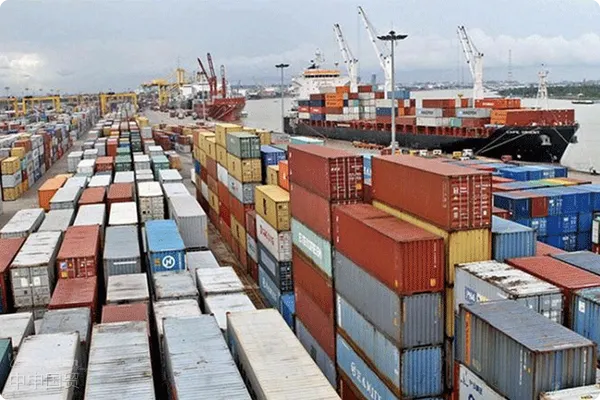- Shanghai Zhongshen International Trade Co., Ltd. - Two decades of trade agency expertise.
- Service Hotline: 139 1787 2118
As foreign trade practitioners, facing off against customs policies is almost a daily routine. Especially when it comes to tax rebates, many practitioners are always both expectant and nervous. The Measures for the Administration of Tax Collection on Import and Export Goods of the Customs of the Peoples Republic of China (hereinafter referred to as the Measures) officially implemented on December 1, 2024, provides taxpayers with clearer tax rebate guidelines.

I. Categories and differences of lithium - ion batteries
Lithium - ion batteries are mainly divided into two categories:
- Lithium metal batteries:
- Characteristics: Non - rechargeable (primary batteries), commonly found in small devices such as button batteries.
- Applications: Low - power devices such as watches and remote controls.
- Lithium - ion batteries:
- Characteristics: Rechargeable multiple times (secondary batteries), such as mobile phone batteries and laptop batteries.
- Applications: Consumer electronics, industrial equipment, energy storage systems.
In the United Nations Model Regulations on the Transport of Dangerous Goods (TDG), both types of batteries are classified as dangerous goods, but the specific requirements vary according to battery capacity, weight and packaging characteristics.
II. Key points of packaging for dangerous goods and customs supervision
Performance inspection of packaging containers
According to the Law of the Peoples Republic of China on Commodity Inspection, lithium - ion batteries for export need to use packaging containers that have passed performance inspection:import and exportImpact resistance
- : The packaging should have the ability to resist dropping and compression to ensure safety during transportation.Leak - proof
- : Ensure that the internal materials of the battery will not leak under extreme conditions.Export enterprises need to apply to the local customs for the use appraisal of packaging for dangerous goods. Only packaging containers that have passed the appraisal can be used for export. This measure ensures that the packaging meets the safety standards for international transportation.
Packaging use appraisal
Lithium content or watt - hour limit
III. Exemption situations for packaging of dangerous goods
TDG Clause 188 stipulates several exemption conditions. Lithium batteries meeting the following requirements may be exempt from certain dangerous goods restrictions:
- Lithium metal batteries: Lithium content ≤ 1 gram.:
- Lithium - ion batteries: Watt - hour ≤ 20Wh.
- Battery packs: Lithium content ≤ 2 grams or watt - hour ≤ 100Wh.
- Gross weight limit of packaging
- The total weight of a single package shall not exceed 30 kg (except when installed in equipment).:
- Labeling and short - circuit protection
- The packaging shall be marked with a lithium - ion battery mark that complies with international standards.:
- Take effective measures to prevent short - circuits, such as using linings and insulating materials.
- If these exemption conditions cannot be met simultaneously, enterprises need to complete the packaging and declaration procedures according to the standards for dangerous goods.
Different modes of transportation have different compliance requirements for lithium - ion batteries:

IV. Export safety tips
Comply with the regulations of the mode of transportation
: Refer to the International Maritime Dangerous Goods Code (IMDG Code).
- Maritime Transportation: Comply with the International Air Transport Association Dangerous Goods Regulations (IATA DGR).
- Air TransportationRail transportation
- : Comply with the Regulations Concerning the International Carriage of Dangerous Goods by Rail (RID).Enterprises need to adjust the packaging, declaration and testing processes according to the specific mode of transportation.
Based on the latest policy trends, it is recommended to pay attention to: The origin accumulation rules after the full implementation of RCEP
Pay attention to the regulations of the target market
Export enterprises need to fully understand the regulations and certification requirements of the target market. Different countries or regions have different compliance standards for the import of lithium - ion batteries. For example:
- FCC (Federal Communications Commission of the United States): Applicable to batteries for wireless devices.
- UL (Underwriters Laboratories of the United States): Focuses on the safety of batteries.
- CE (European Union Certification): Indicates that the product complies with relevant EU regulations.
- RoHS (Restriction of Hazardous Substances Directive for Electrical and Electronic equipment): Restricts the use of hazardous substances.
Understanding and preparing relevant documents and test reports in advance can effectively reduce trade risks and ensure the smooth entry of products into the international market.
Conclusion
The export of lithium - ion batteries involves complex safety and compliance requirements. When expanding overseas markets, enterprises need to pay attention to the following points:
- Clarify the battery category and accurately judge the applicable international transportation rules.
- Complete the packaging performance and usage appraisal to ensure compliance with the requirements of dangerous goods transportation.
- Prepare certification materials and documents in advance in combination with the regulations of the target market.
Through adequate preparation and standardized operation, enterprises can not only reduce risks but also win more opportunities in the global market and achieve sustainable business growth.
Related Recommendations
? 2025. All Rights Reserved. 滬ICP備2023007705號-2  PSB Record: Shanghai No.31011502009912
PSB Record: Shanghai No.31011502009912










